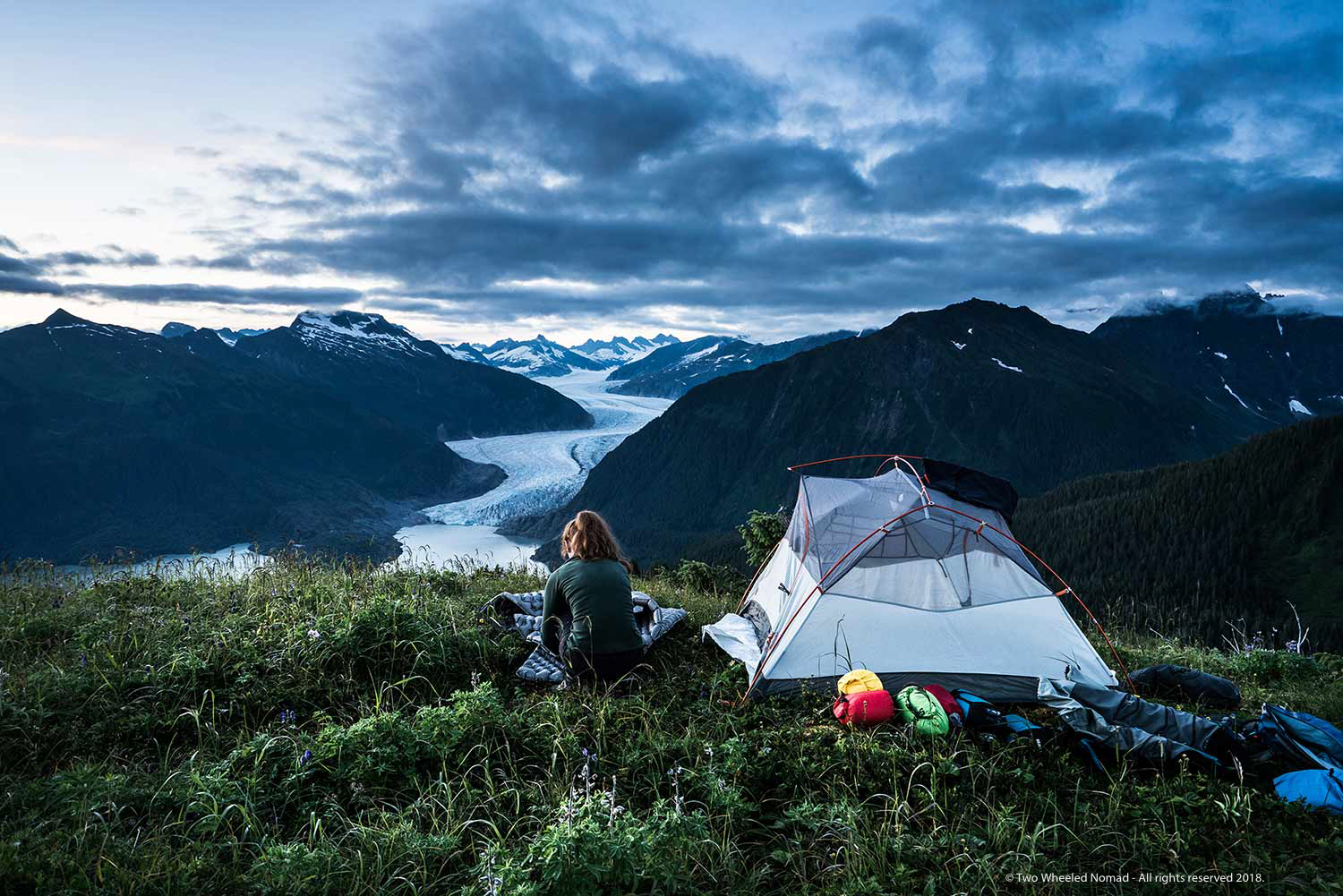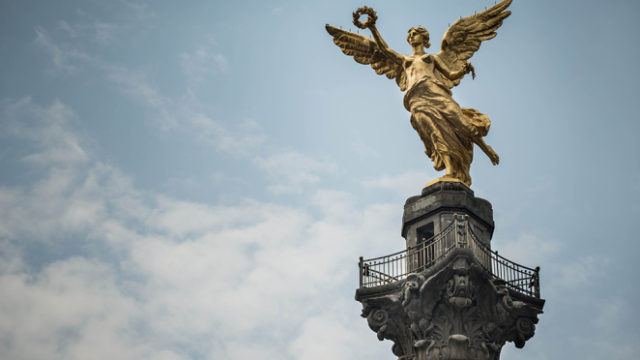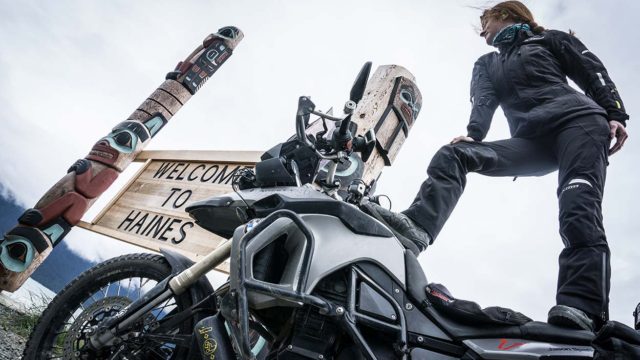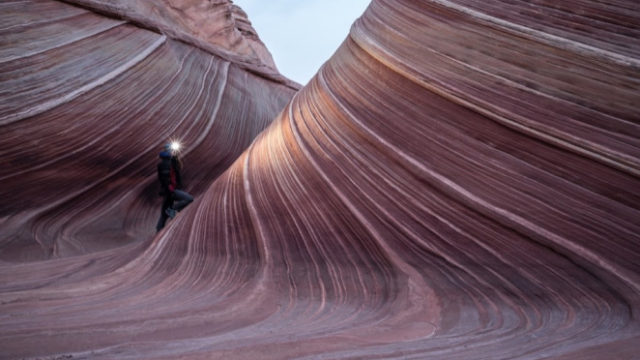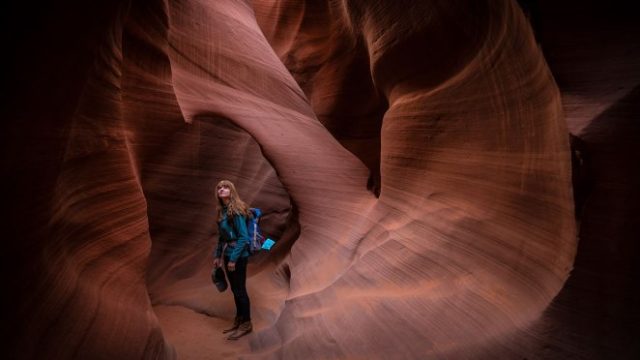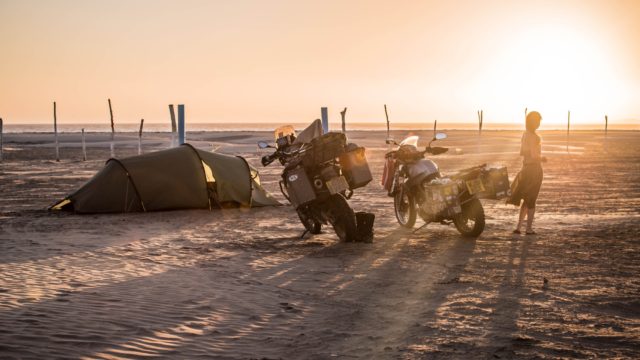Yup. It’s been a while. Stark raving mad-as-a-box-of-frogs, the radio silence is o-v-e-r. “Delighted” is a weak term; I’m finally able to relieve the itchy feet as we hit the road again. From late summer last year right through to the onset of spring based in Alberta’s Narnia, this summer found us back in Southeast Alaska—trigger-happy on the humpbacks, (Sony style). U.S. visa expiry and friendship renewal have led us full circle. Fortunate to write the backstory from May 2017 in the comfort of the Stowasis, it’s overwhelming to know how to pack it all in. But pack it in, I will.


With an unexpected week in the company of Steve Backshall (presenter of the television series Deadly 60), his immediate entourage and 80-strong crew, we got lucky and some of the scoop as the BBC filmed Wild Alaska Live in Juneau. Hanging out with friends of a whale watching company anyway, became a case of it’s not what you know…


Bumping into Neil and Nigel, remote cameramen deployed at Mendenhall Glacier (the basecamp for the show), I watched in fascination on the End of Time forest trail as they crouched down, fully engaged in tending to a defective camera pointing towards the creek. Just hours earlier, a black bear had come padding along, no doubt in search of lunch—a smorgasbord of sockeye—and trampled over the camera equipment. I guess it’s no teddy bear’s picnic when you’re hungry.

Bear damage limitation executed to said camera, all the underwater cameras, which were stationed to capture the salmon spawning, remained unharmed. Safeguarded in waterproof housings. So I asked how the crew achieved the same for the underwater microphones, also situated in the creek. Nigel’s answer: condoms. The only thing capable of protecting the devices without muffling the sound quality. Safety first, huh!
The morning saw BBC presenter Matt Baker host part the show for the British audience, while Liz Bonnin reported grizzly activity live from Katmai. Meanwhile, the afternoon saw the Kratt brothers host the U.S. version on PBS. All made possible due to the editing team, working tirelessly over 12+ hour days. That, and I hear on good authority through requesting a constant flow of tea. As someone who’s all but married to a tea lover, I hear you, British ladies and gents.



Tension rose throughout the week congruent with everyone’s deep-seated hopes of capturing the humpbacks bubble-net feeding. The live show must go on, which is why numerous pre-recordings were filmed as a contingency. On the 11th hour, incredibly, the whales performed; namely, chowed down the herring by the gulp load. Discreetly, Jason and I stayed on the periphery, as the crew transitioned the boat into a floating studio. Prepped with the massive whale cam, which had dictated the use of a crane to install, and a lot more besides, facilitated the live portion of the show. That is, so long as the boat stayed within sight of the temporary satellite station, streaming live on land.
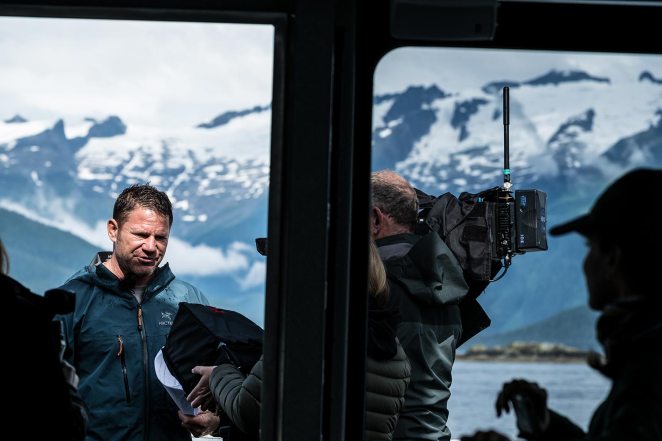
Steve, who possessed an unapologetic way of filling his skin, was accompanied by a local university professor, and together, they executed pieces-to-camera for the third and final episode. Undeniably, it was a privilege to be behind the scenes.
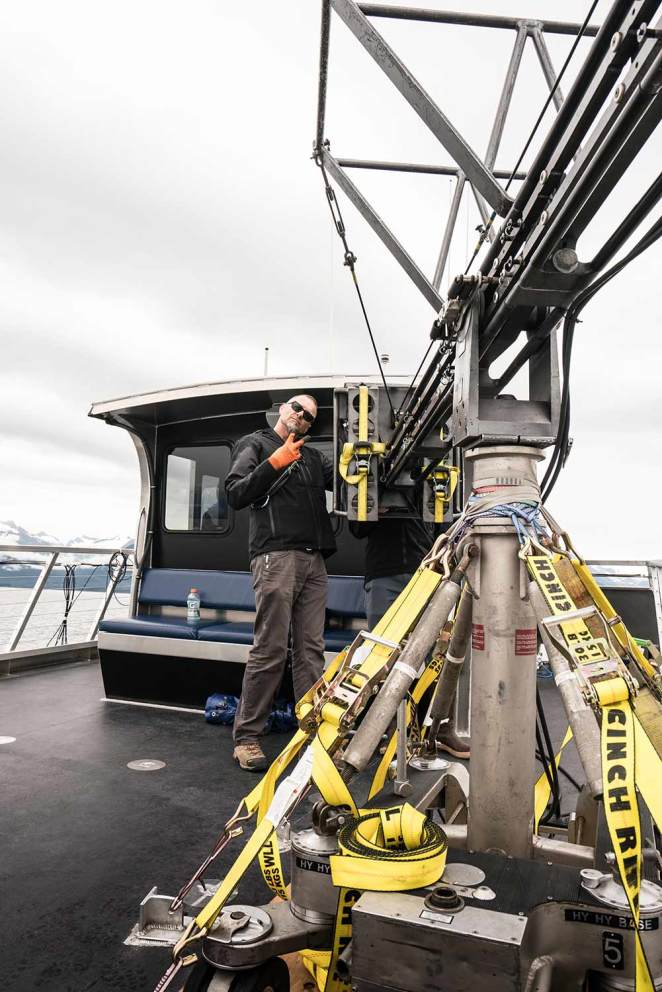


With the BBC gone, a weekend jet boat camping on the beach at Taku Inlet with our host Hal, and his friends was unexpectedly hilarious. As much as it was bittersweet, for that matter. Fathoms-deep thanks go to Doug for waking us up at 4am: gently urging us to move the tent before we float out to sea. Guess we all got the tides a little off. That wouldn’t be the last time either… Wet gear notwithstanding, a fun time was deposited in the good times’ bank, even if it was a darned expensive one when Jason’s drone succumbed to the Alaskan wilderness, now lost forever at the bottom of the sea. YIKES!

The silver lining: Jason’s flip-flops that floated away during the watery escapade returned as a pair. All by themselves! Later that morning. Like Jesus sandals, they walked on water and came back to him. The arrival scene still makes me giggle like a hyena. A small rescue search in the boat later, and we found the cooler box. Chock full of eggs and bacon a mile up the estuary. Phew, all was not lost.
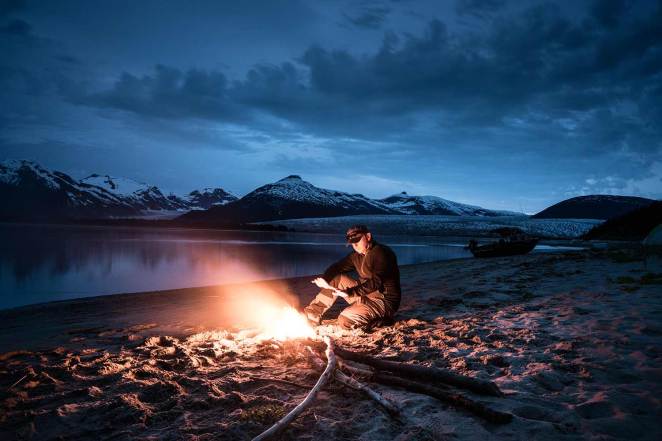
Back in Juneau for nearly five months presented too rich of an opportunity for Jase to turn down a day at Pack Creek on Admiralty Island. Abundant with mountain studded forest, courtesy of the Tongass National Forest. It’s thee place for grizzly bears when in Juneau. With Liz Bonnin further whetting Jason’s unsatiated appetite for bears, he helicoptered himself over and spent the day shooting them to his heart’s content. Wild and exposed. A photographer’s paradise and brown bear bliss.

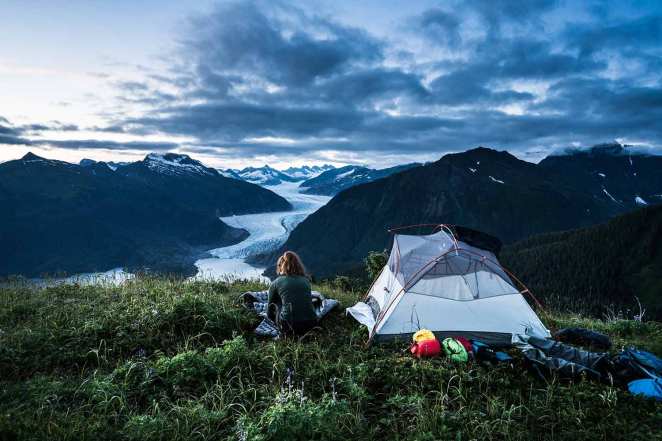
Set in the Tongass National Forest, Thunder Mountain is beautiful and austere. It was when I noticed the beauty that surrounded me, the wonder of things both small and large: the colour of a wildflower that brushed against me on the trail right before the grand sweep of the sky as the sun faded over Juneau’s icefield.

Shortly before departing our selfless hosts on Douglas Island, Terry, Jason’s father visited. Catching up on just shy of two years apart kept the pair occupied all week. And striking gold without buying a lottery ticket I’d say, when Terry managed to pretty much see it all: humpbacks breaching, pods of orcas, black bears and their cubs, and more baldies than Nottingham has pigeons, to name a few.
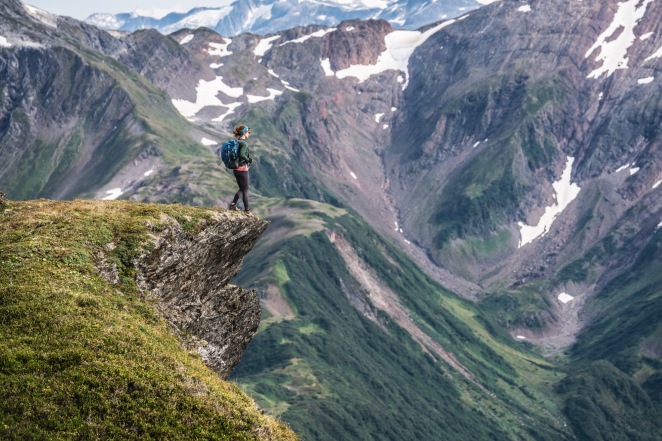
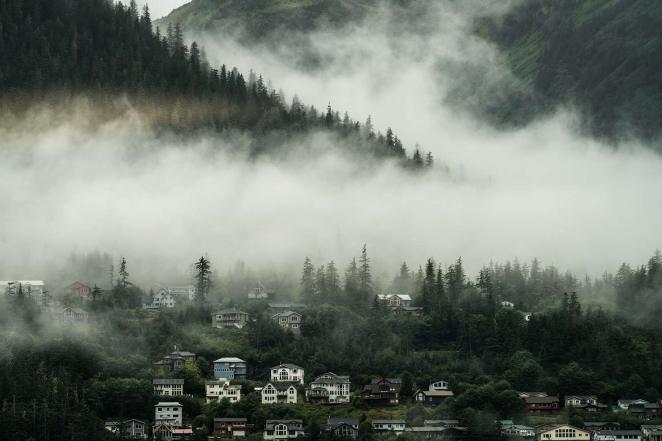
Visa expiry looming, D-Day arrived in early September where our departure from Juneau soon gave way to a welcomed pitstop at a friend’s in Skagway. Admittedly, we’d only clocked two hours at sea and two miles by road from the southeast Alaskan ferry port. There was no real rush. A mere half-hour ride between Skagway and the Canadian border lay between us. But why does that half hour journey still feel like you’re not only crossing time zones, but political borders and linguistic and cultural frontiers as well?


After a serene 1,500-mile six-day ride from Alaska to Alberta via the Cassiar Highway, without incurring a single motorcycle issue, was riding rapture. Periodically tucking into poutine (a Quebecois dish originally made with French fries and cheese curds topped with a brown gravy), routinely sounded like a cheering idea in the biting temperatures and so it proved to be. I thought I’d died and gone to heaven. Although perhaps slightly slower going out of the saddle thanks to the added cargo of cheesy chips and gravy.
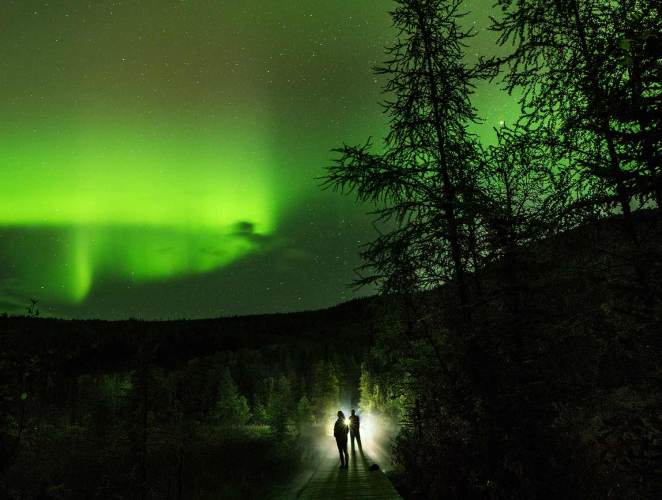
Unannounced, a winged insect took refuge in my left ear for an evening at Liard River Provincial Park en route. I suppose it made a refreshing change to be the host and not hostee. We’d taken a significant detour to experience Liard Hot Springs: a place that teeters on perfection. Grinning as I eased myself in, from the sheer unalloyed joy of making full body contact with 40 degrees Celsius of hot flowing water, I noticed a handful of red-faces bobbing up and down. Relaxation seeped into every joint and muscle. Man alive, I could develop a fetishistic pleasure for this, I mused.

Jason commented on an overpowering smell of sulphur as if someone was boiling every egg in British Columbia. Getting pinker by the moment, I cared little and less as soaking in the thermal waters provided bone-deep relief.
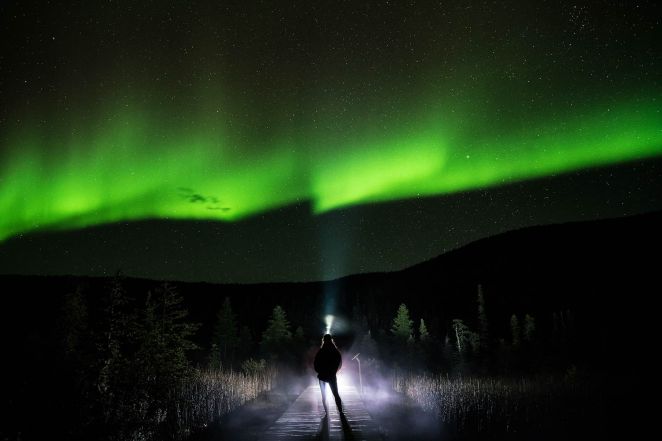
“Look up,” I slowly whispered, “the after-dinner show!” Later in the sky that night, a vivid green light was shimmering. It grew brighter, changed to a shade of purple, then pink, and suddenly shot in a streak to the dome of the sky. All we could do was gawp. “It’s the aurora borealis.” It’s Latin, meaning “the northern dawn”. I’d seen the northern lights before, glowing briefly on an Alaskan horizon but never this bright. Never this otherworldly. This was different, a display of brilliant pastels that curled and trembled over the silhouettes of the trees, a big Wurlitzer jukebox in the sky. For one night only, we had the best seats on the planet for nature’s most spectacular show.

The appearance of the Northern Lights constituted our third solar powered jig, which was OFF THE SCALE due to the recent coronal mass ejection. The sun had been very active as of late. Apparently, solar flares also known as a coronal mass ejection spew energetic particles into space, which collide with the earth’s atmosphere causing the celestial firework display that we witnessed in unabashed awe.
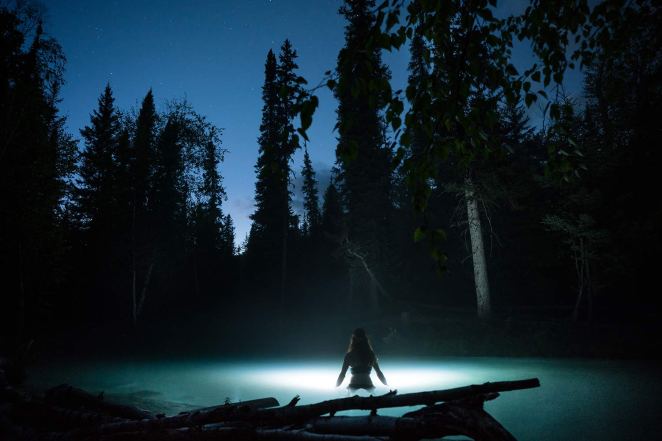
As I stood stock still in the liquid warmth at Liard Hot Springs—toes dug into the gravel for statue-like stability enabling Jason to get the shot—the steaming night gave way to those twinkling rivers of light, transforming the dark world. Ripples of colour rose in layers from the bottom to the top and unexpectedly sent bright streamers flying so high that we had to crane our necks and arch our backs in a way we didn’t think was possible. As charged particles from the sun entering the atmosphere of the earth go, I would never get used to witnessing these flamboyant dancers of the night.
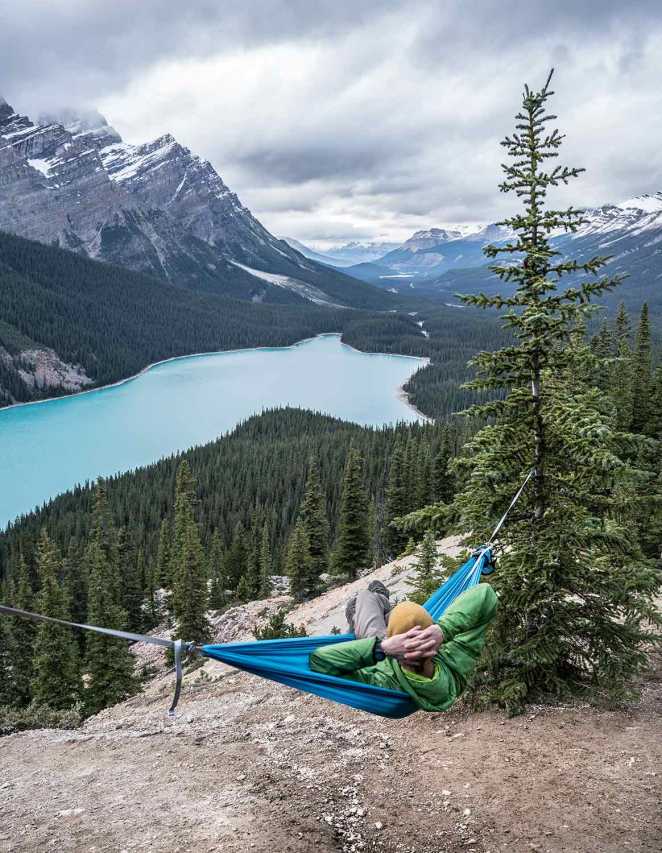

Back at the Stowasis for a couple of weeks, we dumped our bags but made time for some of Alberta’s most alluring lakes again. ‘Tis Canada in the fall after all: autumnal colours surrounding the deep glacial turquoise of Athabasca, Ghost, Louise, Minnewanka (that’s right), Moraine and Peyto, with a couple of the Icefields Parkway’s waterfalls thrown in for good measure, all shone brilliantly set against a warm rainbow of russet reds, burnt oranges and array of golds.


Most of the lakes were worthy of visiting while in that neck of the woods but perhaps most memorably, Lake O’Hara blew the others out of the water. Set in the heart of an alpine area of British Columbia on the western side of the Great Divide, with the province of Alberta and Banff National Park to the east. Ordinarily, visitor numbers are greatly limited—phalanxes of tourists are prohibited—where it takes a minimum of three months to secure a spot in the pristine Yoho National Park.

As Lady Luck would have it, she permitted us to take advantage of a last minute cancellation. With the golden larches set against the forest greens, the die was eternally cast. Although they’re conifers, larches are deciduous trees that actually lose their needles in the autumn but before they do, they are known for their brilliant autumn colour. Akin to the aspen in the fall of Colorado. It’s also the colour of Piccalilli, a relish of chopped pickled vegetables and spices (known to Brits as the luminous condiment).

Lake O’Hara and its awesome landscape, using the adjective as Wordsworth might rather than Bill and Ted, was one of those places I’d return to in half a heartbeat. It’s my kind of Canada and sated on a variety of levels, it reflects my centre of gravity, the directions that pull me, a place that at the start of every season will make me think, I wonder what that place is like now.


